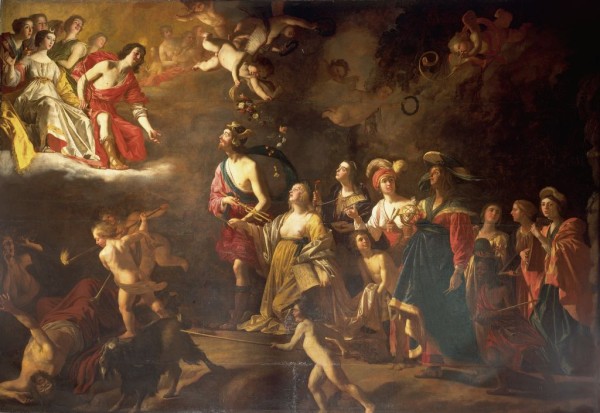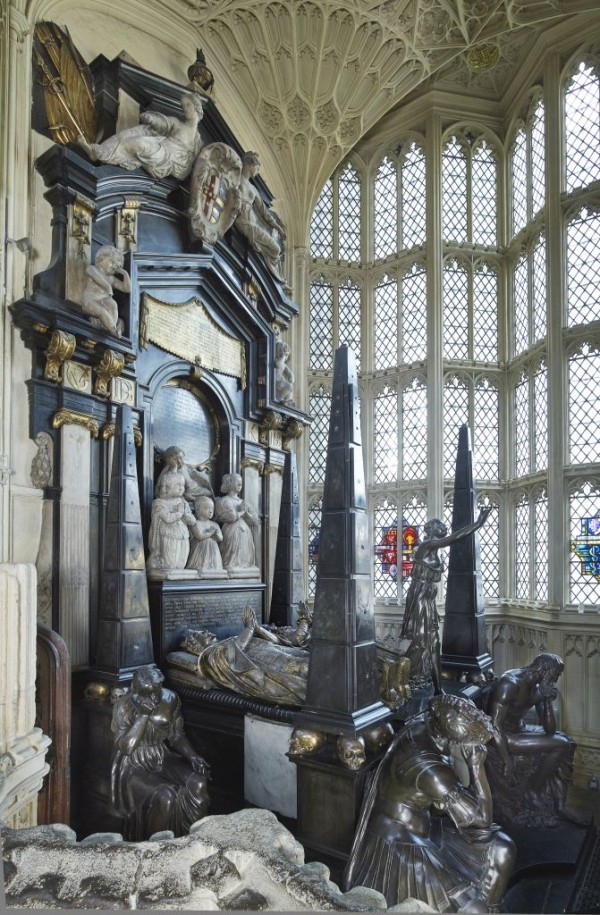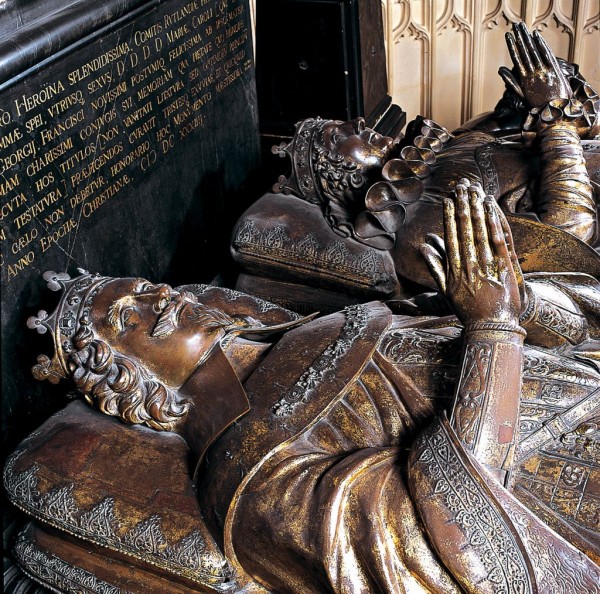Fall from Grace
Villiers’s extravagance and political power made him increasingly unpopular with Parliament and the public. He was assassinated in 1628, at the age of just 35.

© Royal Collection Enterprises Limited 2024 | Royal Collection Trust
Apollo and Diana, 1628, by Gerrit van Honthurst (1590-1656)
Honthorst was a Dutch painter born and trained in Utrecht. He worked for King Charles I in London from April to December 1628.
Villiers possibly commissioned this painting 1628, but was murdered in August of the same year. In this image Villiers plays the role of Mercury, messenger and god of commerce, before Charles I (as Apollo, the god of art and learning) and Queen Henrietta Maria (as Diana, Apollo’s sister).
This extraordinary painting is in the new baroque style and it shows Villiers as the servant of the King. It now hangs on the Queen's staircase at Hampton Court Palace.


© Crown copyright: UK Government Art Collection
Katherine, Duchess of Buckingham (1603?-1649), with her children: Lady Mary Villiers (1622-1685), later Duchess of Lennox and Richmond; George Villiers, 2nd Duke of Buckingham (1628-1687); and Lord Francis Villiers (1629-1648). Sir Anthony van, (studio) Dyck. Oil on canvas, c.1633.
This portrait of Katherine and their children was painted after Villiers’s death. He is represented in a portrait on the wall behind his family and in a portrait miniature, which his widow clasps to her bosom.


© 2024 Dean and Chapter of Westminster
The tomb of George Villiers, 1st Duke of Buckingham in Westminster Abbey
‘Here he lies, a reproach to the fickle mob’
In 1634, Villiers’s widow Katherine commissioned a magnificent marble tomb for him, with an inscription that expressed her love for him and her belief that the world had misjudged his nature and motivation.

His rivals were suspicious of his motives and feared the political and military power that he wielded. Villiers was accused of corruption and mismanagement of various military and naval campaigns. In 1626 a case was brought against him by members of the House of Commons. He was seen as ‘the chief cause of these mischiefs and evils’. Parliament tried to force Charles I to dismiss the favourite in 1628, but the King remained loyal.
On August 17, 1628, Buckingham arrived at Portsmouth to organise a military expedition to La Rochelle in France. Five days later he was murdered by John Felton, a soldier who had served in his campaigns who believed that Villiers was to blame for their failure. He repented of his action before his execution.
The public and his rivals rejoiced at the news of his death.
He was buried without ceremony in Westminster Abbey, surrounded by kings and princes, the first commoner to receive such an honour.
Was his reputation deserved? In 1641, Sir Philip Percival wrote:
‘I remember I was in England when the Duke of Buckingham fell, whom many men thought the only cause of all the evils; but those that were of that opinion did not find it so afterwards.’
Villiers remains in the popular imagination as an intriguing and glamorous figure, portrayed as a villain who may have had a hand in the death of King James I, a romantic hero in The Three Musketeers and now as an icon of queer history.

